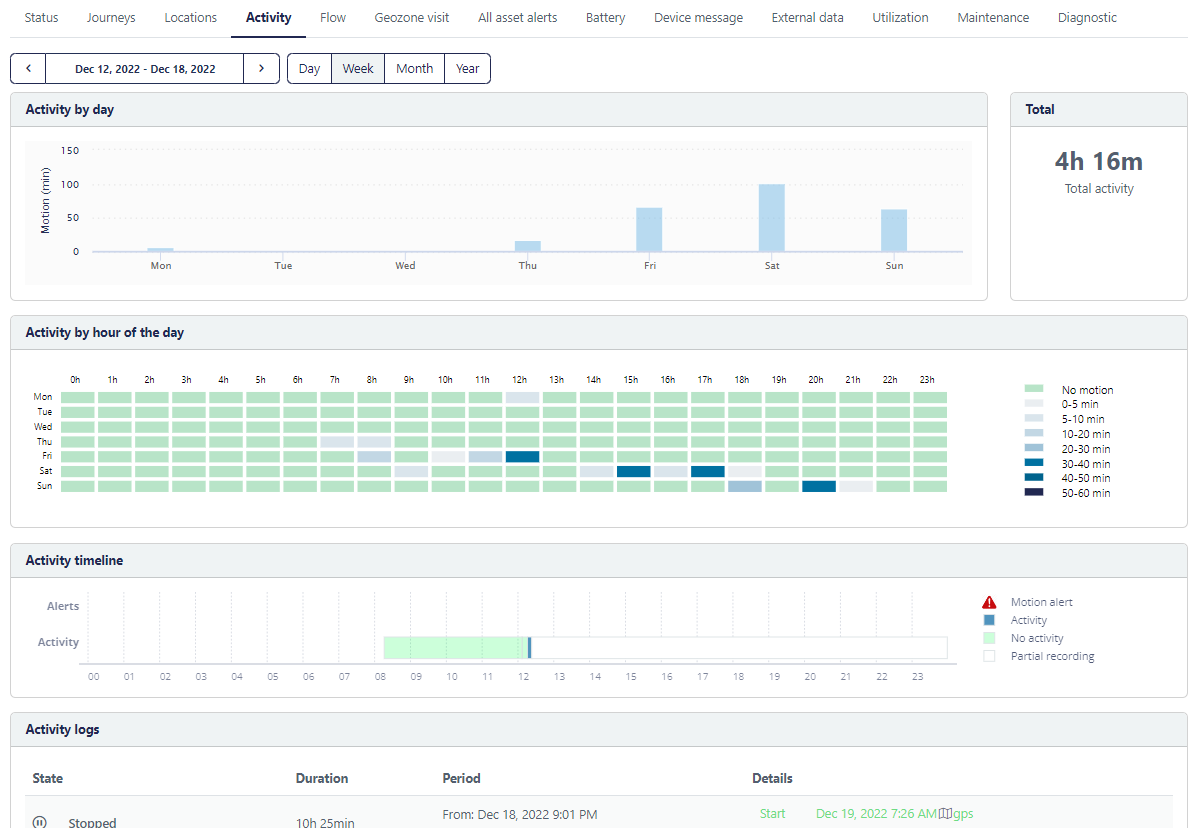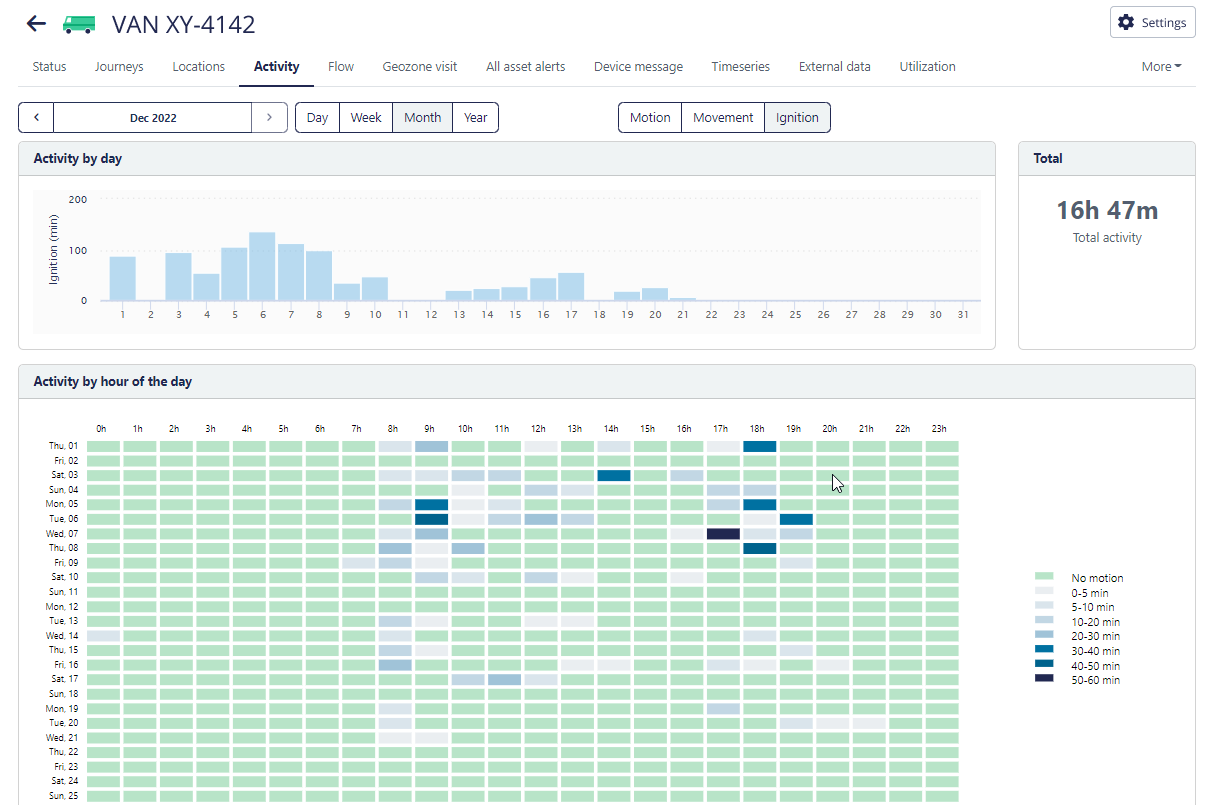Asset Details: Activity
Understand the activity information of an asset.
The activity of an asset gives high-level insights on how often an asset has been used over time. For connected trackers powered by batteries (for example the TRACK 10xx and 11xx series trackers) the activity of an asset is defined on the accelerometer and the storing of START and STOP events in the location history. When using externally powered trackers (for example TRACK-12xx series trackers) installed in vehicles, activity is detected when the engine ignition is on. This is a very good metric to estimate the activity over time. To see the activity information of an asset go to Asset list → select tracker → Activity tab in the top navigation bar.

| Field | Description |
|---|---|
| Time selector | On top of the window it is possible to select the time frame of the activity information of your asset that you want to see in the figures below. It is possible to see activity on day level (per hour), on week level (per day & hour), on month level (per day & hour), on year level (per month & hour). |
| Total | Widget with total duration of activity of the asset during the defined time period. |
| Activity by day (or month for year level) | Bar graph of activity of the asset per day. Hoover over the bar to see detailed information on the duration of the activity. |
| Activity by hour (or day for year level) | Heatmap of the activity of the asset per hour. Hoover over the blue blocks to see detailed information on the duration of the activity. If the time selector is set to day-level an activity timeline will be shown instead of a heatmap. |
| Activity logs | Detailed log information on the activity of an asset. Here you can find information on the duration but also on which location technology used to capture a stop location that is used for the stop detection of the activity of your tracker. The activity log is most interesting for people that want to understand how motion is converted to activity on the platform. |
Activity information based on ignition signal for vehicle trackers.
Externally powered trackers (for example TRACK-12xx series trackers) installed in vehicles detect when the engine ignition is on, which is also a very good metric to estimate the activity over time. For these type of trackers there are some more options when activity of an asset is shown on the platform

In the top navigation bar you see next to the time selector the metric selector. Here you can choose between:
- Motion: activity definition is based on the START STOP detection of the tracker in the same way as for the battery-powered trackers (see above)
- Movement: activity definition is based on any movement of an asset, not only on location changes.
- Ignition: activity definition is based on when the ignition of a vehicle has been activated and stopped.
Detailed activity information
For trackers running on the SNT4 platform (TRACK 1101,…) it is also possible to get detailed activity information. This detailed activity information is based on two items:
- The minute-accurate motion data measurement which reports for each minute of a journey if the tracker was active in that minute. For very long journeys (more than 8 hours) the tracker will automatically switch to 5-minutes accuracy
- The configuration of the detailed stop timeout which means that it is possible to configure a period of time that if exceeded is not counted towards the total time.